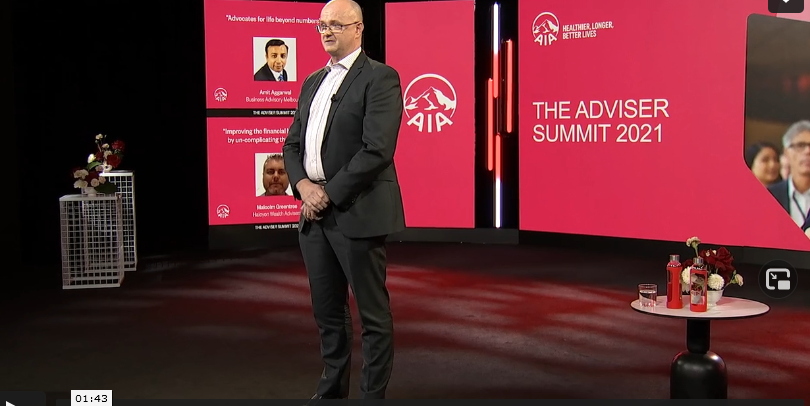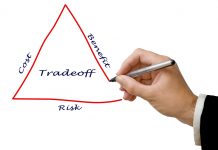The holy grail of advice is trying to understand the true cost to serve on any client profile, so advisers can apply the right level of profit to that, so the fee is right for the client and for the business, says Rob Jones, Principal, Peloton Partners.
Speaking on the second day of the virtual AIA Adviser Summit, Jones showed the adviser audience an aggregated profile of 120 firms covering both large and small firms, offering different types of advice.
These firms had $144 million in gross revenue, expenses of about $108 million and about $36 million (in aggregate) in profit, or a 25 percent profit margin. But Jones says delve further, and the issue is that the up-front non-recurring revenue is about $15 million or 11 percent.

That leaves about $20 million of profit, or about 14 percent of the firms’ revenue. It is not 30 percent where it should be, he says, noting that this underscores that the ongoing fee models, regardless of their structure, “are just not doing it”.
Jones told the summit that many firms still operate outdated pricing models that (in the main) price the wealth of clients only or segment clients by how much revenue they are paying the business – still a form of pricing wealth.
He says that understanding the cost to provide advice to any client, can no longer be “guesswork”.
…when they talk to advisers, there is a tendency to want to push costs down for some reason…
He also noted that when they talk to advisers, there is a tendency to want to push costs down for some reason. He has never understood why advisers feel the need to try and make it as cost affordable as possible, but forget about themselves.
“Clients are not forced to obtain financial advice, it is a self selection process triggered by special events or needs including a lack of understanding of financial matters.”
Therefore, he says, the clients are electing to invest in their financial well-being, financial security or financial improvement.
He notes that as advisers “…we focus on cost more than clients who focus on the value received from the relationship”.
He adds there is a cost and an investment inherent in the adviser/client relationship and that advisers must understand the cost of delivering advice so they can attach a reasonable profit, and for too long profit has been neglected.
A Layered Multi-Factor Approach
Jones says that pricing is a layered multi-factor approach.
Firstly there is the intangible value element: The client is investing in their future – they have a trusted adviser who proactively contacts them; they have an ongoing continuous relationship; the adviser understands them; they have on-demand availability; active assistance to achieve their goals. It is about empowering clients, allowing them to live the life they choose.
He then points to the tangible things, the services advisers must provide to clients.
Jones says the next tier is dealing with client complexity and additional value add, saying that if you do not have the structure to be able price complexity in, that relationship will be not profitable to you.
His company’s process means they must understand the revenue and quality of the revenue. He says low quality revenue is upfront non-recurring revenue plus any indirect revenue source and that removing this revenue unmasks the real profit being generated by the ongoing advice model that is in place.
Jones says that it is about communication with clients.
They see services relevant to them the adviser has worked out, the range of potential fees that could be charged, they see the service selection the adviser has made ranked as to whether their needs have minimum, moderate, maximum charge which pulls through to the final fee.




